| 1920 |
|
| |
| 1923 |
Founder Hideo Sato opened Sato Paper Works at 1-10 Ichioka-dori, Minato-ku, Osaka. The factory specialized in paper tubes and primarily served the electrical industry. |
|
| 1930 |
|
| |
| 1932 |
Reorganized as Showa Marutsutsu Works (unlimited partnership). Designated by the Osaka Army Ordnance Depot to produce cartridge case caps, artillery shell containers, and other products for the military. |
|
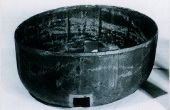
Cap for Cartridge Case
Material of the caps of those days was special (torinoko) paper made from vegetable skin fibers, many layers of which were glued together and press-formed into a cap. |
| 1940 |
|
| |
| 1943 |
Incorporated as Showa Marutsutsu Co., Ltd., with Hideo Sato as President at a capital of JYE100,000. Designated as a Controlled Factory of the Osaka Army Ordnance Depot. |
| 1948 |
Begins production of various paper tubes for synthetic fibers, using the company's original technology. |
| 1949 |
Completes development of the Paper Cone. |
|
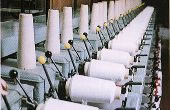
Paper Cone
The high-strength cones for rayon yarn, completed in 1949, enjoyed strong sales, riding on a textile-led business boom. |
| 1950 |
|
| |
| 1952 |
Completes development of the Cheese Tube. Consolidates dispersed factories into today's Osaka Plant. |
| 1954 |
Successfully develops Paper Bobbin for nylon yarn. |
|
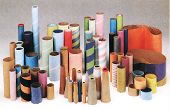
Yarn Carriers
These yarn carriers built a solid business base for the company |
| 1960 |
|
| |
| 1964 |
(March) Enters into a capital and technological partnership with TCT of Australia. Also signs technology transfer contracts with Sonoco Products, DMM, and Crescent Plastics of the United States; and TPT of the United Kingdom. (August) Founds Showa Products Co, Ltd. (Capitalized at JYE150 million), begins technology transfer from the above companies. |
| 1966 |
Establishes an automatic dip-painting facility, develops technology of rust-proofing and surface-processing, and completes mass production line for Steel Bobbins.Additional production line for paper cones. Founding President Hideo Sato dies and is succeeded by Isao Sato. |
| 1967 |
Founds Showa Plastics Molding Co, Ltd. (Capitalized at JYE8 million). |
|
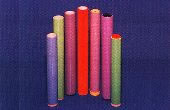
Steel Bobbins and Plastic Sleeves
The quality and productivity of the steel bobbins,which had been dried naturally after painting, improved with the introduction of large drying machines. The plastic sleeves enjoyed explosive sales with their superior quality and productivity, thanks to transfer of technology from overseas. |
| 1970 |
|
| |
| 1972 |
The "Touch-Pon" packed in Showa's composite cans enters sale nationwide. |
| 1975 |
POY and DTY tubes enter production. |
|
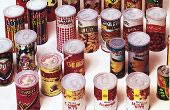
Composite Cans
Pictured here are composite cans at early days of mass production. Developed in 1963 with technology from Sonoco, the composite can entered production in 1972 with Toyosu Seika's snack "Touch-Pon." Use of the composite can spread rapidly in the snack-food industry. |
| 1980 |
|
| |
| 1980 |
Begins production of toner cartridges, H (PVC) cores, and globes. |
| 1987 |
Founds Showa Engineering Co, Ltd. Enters into the mold making business for plastic molding. |
|
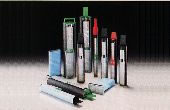
Toner Cartridges
Demand for toner grew with the widespread use of photocopying equipment. Toner Cartridges using Showa original technology expanded their sales, riding on the wave of office automation. |
| 1990 |
|
| |
| 1990 |
Founds Showa Press Co., Ltd. for metal pressing (Capitalized at JYE20 million). Founds Sonoco Asia joint company. Showa Marutsutsu's capital increased to JYE100 million. |
| 1992 |
Begins production of PAXY series products. |
| 1994 |
Signs a joint development contract with Cambridge University on "The Tribology of Paper." |
| 1995 |
President Isao Sato becomes Chairman. Jun Sato becomes President. |
| 1996 |
Signs a licensing agreement on CCS (Clean Clic System) with IPN of the Netherlands. |
| 1997 |
Opens Showa Museum. |
| 1998 |
(August) Begins production of "XY" pellets.
(December) Earns ISO9001 Certification at Suzuka Plant. |
| 1999 |
Transfers Showa Marutsutsu headquarters from Kita-Ku, Osaka to the city of Higashi-Osaka. |
|
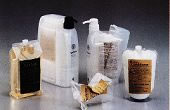
Clean Clic System
A liquid dispensing packaging system comprised of a dispenser and a disposable cartridge pouch. This system provides superior performance in every application, in terms of environmental soundness, economy, and efficiency in use. The innovative ideas and superior technology embodied in CCS will build the package of the next generation. |
| 2000 |
|
| |
| 2002 |
(October) Funds Showa Marutsutsu, (HK) Ltd. (capital HK$300,000).
(December) Acquisition ISO14001at Gifu Plant |
| 2003 |
Showa Marutsutsu, (HK) Ltd. begins consignment production in China. |
| 2004 |
(October) Succeeds the business of Sakura Paper Tube Co, Ltd. |
| 2005 |
President Jun Sato becomes Chairman.
Yasunori Iwamoto becomes President. |
| 2006 |
(March) Succeeds the business of Ibaraki PaperTube Co, Ltd. |
| 2008 |
(August) Sold off the ownership of Cosmos-Showa. |
|
| 2010 |
|
| |
| 2010 |
(April) ISO9001 certification is expanded to all companies of the group.
(June) PacPlus Co., Ltd is established by the company split |
| 2011 |
(April) ISO14001 certification is expanded to all companies of the group. |
| 2013 |
(April) Deregistration Showa Marutsutsu, (HK) Ltd.
(November) The 90th anniversary of founding. |
| 2015 |
(October) President Yasunori Iwamoto becomes Vice-Chairman.Yoshihiro Yuasa becomes President. |
| 2016 |
(April) Acquired 35% shares of Onishi Kogyo Co., Ltd. and changed name to Sanko Products Co., Ltd. |
| 2017 |
(June) Sakura Paper Tube changed name to Showa Products Tokushima, and Ibaraki Paper Tube changed name to Showa Products Ibaraki. |
| 2018 |
(May) Acquired 33.5% shares of System LSI Co., Ltd. and formed a business alliance |
|
| 2020 |
|
| |
| 2020 |
(January) Launch a new material Zebro™. |
| 2021 |
(February) Subsidiary Showa Kasei acquires all shares of Toho Seisakusho Co., Ltd.
(May) Showa Products reduced its capital to 100 million yen.
(June) Showa Products merged with Showa Products Tokushima and Showa Products Ibaraki. |
| 2022 |
(July) Chairman Jun Sato assumed the role of chairman and president. |
|
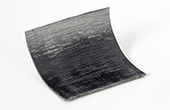
|








